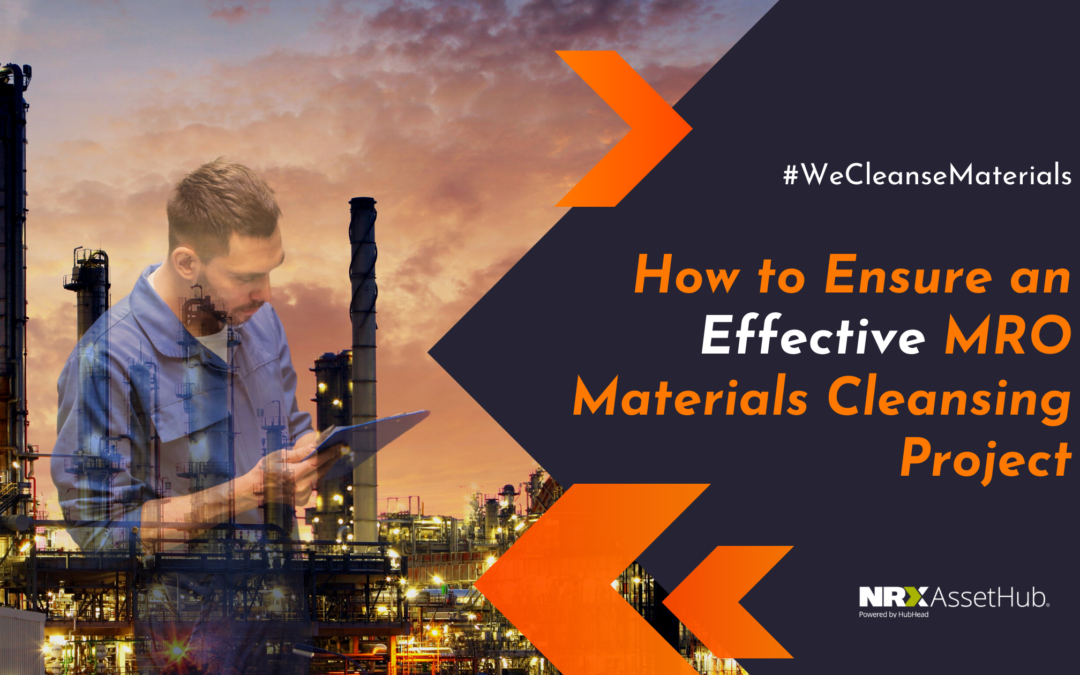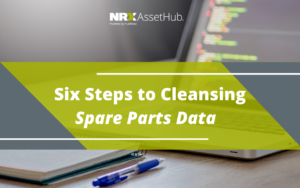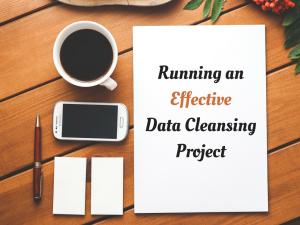Asset-intensive companies have made considerable efforts to improve efficiency and reliability while reducing operating costs. As a result, they have invested billions of dollars in ERP, EAM, and CMMS systems to meet their maintenance and reliability goals. Unfortunately, many companies have failed to ensure their EAM data is accurate and complete, which can affect major aspects of their infrastructure including maintenance, operations, asset integrity, reliability, materials utilization, engineering, and planning.
Like many asset-intensive companies, you may find yourself in a position where you must take measures to ensure the operations of your company run efficiently by fixing the quality of your EAM data. Completing an MRO materials cleanse is an effective to fix the quality of your materials data. A materials cleanse has many benefits for your company’s materials data, maintenance operations, and return of investment (ROI). While a materials cleanse can be a challenging and lengthy process, there are certain best practices you can implement to help you get the most out of your cleansing project.

Prioritize Data
When faced with inaccurate materials data, often the first instinct is to fix everything at once. A task of this magnitude cannot be completed simultaneously. Rather, a strategic list highlighting the most critical tasks is the best course of action.
First, focus on problems that have the largest impact on your company’s revenue and costs. Next, continuously test your results after syncing your materials data back into your EAM. This allows you to evaluate which materials categories provide the best ROI. Finally, reuse work across other similar subsystems so you can save time and money.
Measure Progress
Measuring the progress of a data cleansing project is typically difficult. Some best practices in achieving this include remaining focused on your ROI-based business objective. For example, be mindful of what your company is trying to accomplish and how your EAM system can be used to achieve this. Using a staging solution where you can easily visualize data completeness through intuitive dashboards and reports that can be configured around specific metrics and KPIs is an ideal way to do this.
Set Standards
Most businesses struggle to adopt effective standards for their MRO materials data. Without this, maintenance operations tend to suffer significantly because they are too demanding, and the implementation is too difficult. Ultimately, standards should be properly documented and readily available. In addition, managing data in a solution that includes an approval process ensures all stakeholders are well informed and able to comment on proposed changes. It is also beneficial to use a materials cleansing solution that comes with a robust variety of out-of-the-box features such as reporting, KPIs, and validation libraries.
Ensure You Run an Effective Materials Cleanse Project
An effectively run data cleansing project allows you to load, visualize, measure, and fix your MRO materials data in an easy and effective way.
If you would like to learn more about how our services can help you undergo an effective and efficient materials cleansing project, please contact us and our team would be happy to help you!
Behind the Scenes with Data Cleansing
Six Steps to Cleansing Spare Parts Data
How to Run an Effective Data Cleansing Project
Share this article




